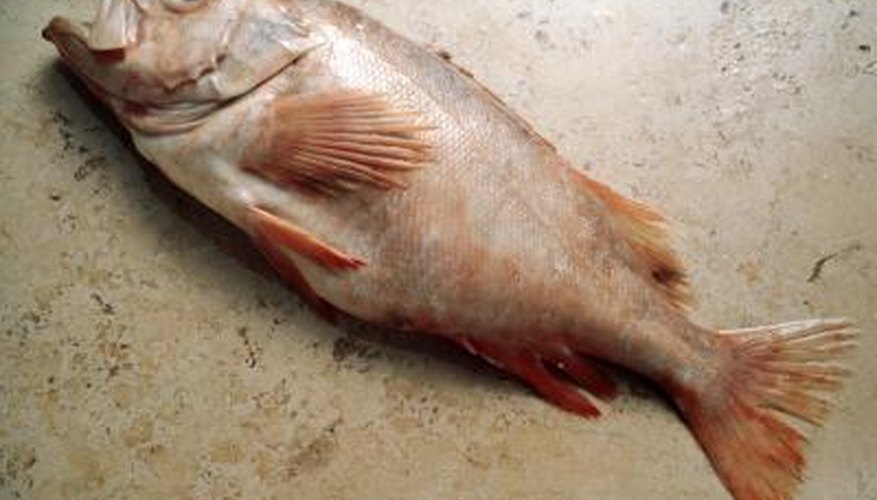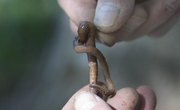
Redfish/red drum are same fish. It really depends on where in the United States you are which dictates what you call it. For instance, in Texas it's most often called a redfish, while in Massachusetts or down the East Coast toward Florida, it would likely be called a red drum. No matter what name you choose to refer to this fish, knowing its identifying features, the waters it inhabits and the baits to use along with the proper tackle will allow you to catch a redfish/red drum.
Identifying Features
A redfish is called a red, spot tail, channel bass or red drum for its bright copper bronze body, according to the website Rod and Reel. Additionally, several large black or brownish spots are located on the fish’s tail, just below the dorsal fin. The mouth of the fish is horizontal and opens downward; the fish has no barbels upon its chin. Redfish average 27 inches in length and weigh up to 8 pounds or more, according to the website Indian River Florida. When pulled from the water or during courtship redfish/red drum create a "drumming sound." It is where the red drum gets its name, according to the website Fish for Fun. The drumming sound occurs when internal muscles rub against the fish’s air bladder. Only male redfish/red drum can create this drumming sound.
Where Found
In the regions where these fish are known as red drum, throughout the Texas gulf coast and Mexico, they are often also called “reds.” In addition, the fish lives in the coastal waters of Massachusetts and along the eastern seaboard to the Florida panhandle, according to the website Fish for Fun. Reds frequent mangroves, canals, places that have significant vegetation and the edges of bays where the water is shallow. In addition, reds visit areas with soft sand and hang around oyster reefs. Reds can survive in fresh water and many redfish/red drum move upriver into tidal creeks and rivers to find food or during cold spells.
Tackle
When fishing for reds, use a thick, deep-sea fishing rod about 10 to 12 feet long. The thicker the fishing rod, the better it will handle the power of a redfish/red drum. Often, anglers will find themselves battling a red that weights 8 pounds or more and are unable to bring the fish into their boat; a thin rod can snap under the sheer weight of the fish. Make sure that the rod is not only thick, but also flexible.
Baits and Lures
Most anglers utilize live bait such as whole shrimp and minnows to induce reds into biting. Reds enjoy sea clams, and when fishing for reds on the sea floor, clams produce good results. Crabs and squid also can work well when fishing in deep water. Bloodworms net the same results as a fat night crawler would when fished in freshwater. Artificial lures such as buck-tail jigs, spoons and floating minnow baits can also be effective.
How To Catch
While fishing, anglers are most likely to come across single redfish/red drum, especially larger ones. Redfish do not gather in large schools, although on occasion group in two or five in any given area. When fishing from a boat, work a jig around reefs. Cast your fish jig above the reef, and bob the pole in an up-and-down motion. This action will garner the attention of a cruising red. Additionally, you can significantly increase your chances by placing a fresh cut strip of fish onto your jigs hook. This adds an extra aspect to the lure, giving it a fishy scent, which often helps convinces a redfish/red drum that the lure is a baitfish. On feeling a bite, set the hook and let the fish run. Utilize the drag on your reel and when worn out, tow the fish towards your boat. Use a gaff, to hook the side of the redfish/red drum, and haul the fish into your boat.
References
Writer Bio
Thomas Ganio began writing in 2006 for the "Northern Virginia Daily," a community newspaper in Richmond, Va. As a freelance writer, he has also contributed to "The Maryland Springs Gazette" and the Parks and Recreation Department of Richmond County, Md. Ganio holds a Bachelor of Arts in social science and English from James Madison University.



